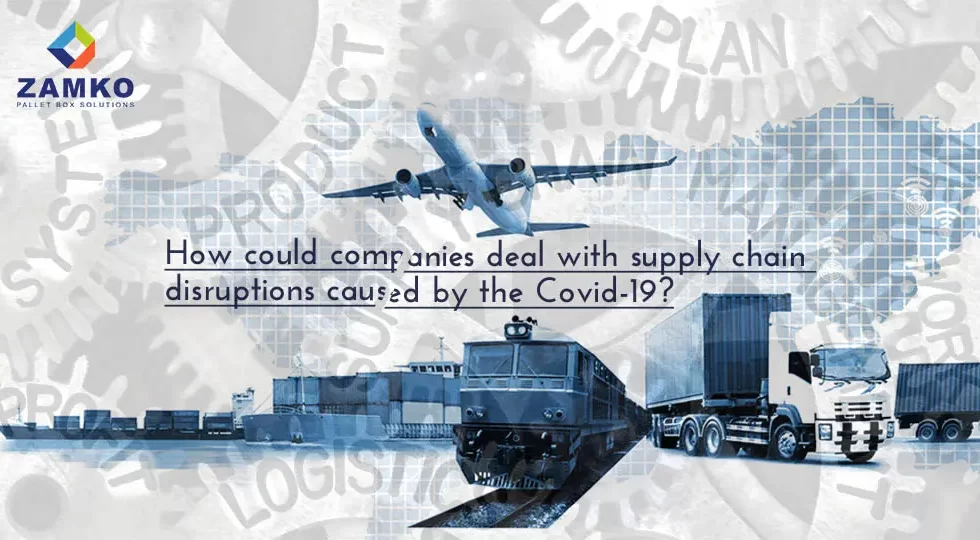How could companies deal with supply chain disruptions caused by the Covid-19?

Supply chain disruptions
There is no industry remained unaffected by supply chain disruptions caused by the Covid-19 pandemic. Even sectors as vital to human life as the medical and food industries have been brutally tested. Corporate values have given way to the primary instinct to save human life. The pursuit of profit was to some extent sacrificed. Governments, investors and company executives faced the ultimate exam. Everyone had to work together to counter this threat, which appears once every 100 years. Since the Covid-19 pandemic began, 94% of companies have had supply chain disruptions. For 75% of these companies, the interruptions had a significant negative impact on their profits and development.
The pandemic is still raging and 55% of companies plan to downgrade their growth outlooks (or have already done so).
The biggest challenges for the supply chain and the logistics of companies caused by Covid-19 pandemic
1. Lack of durability and flexibility of supply chains.
As a result of multi-country disruptions – closed borders and ports, problems with clogged Suez Canal, etc. the truth was seen: supply chains are extremely vulnerable.
2. The costs of the supply chain and logistics of companies have increased tremendously.
And it is expected that this trend will continue in 2022-23. Delayed deliveries lead to losses. Fuel prices have literally gone crazy, and inflation is making every process even more expensive.
3. The lack of qualified human resources in literally every department of companies.
The reason: Covid-19 and measures to stop its spread.
4. Lack of sufficient automation in the logistics process in warehouses.
5. An absence of flexibility also limits the capability to answer customer demands for personalization and customization.
What steps can you take to improve the durability and flexibility of your supply chain?
1. The safety of employes above all.
Saving the lives and health of company employees must come first. Teams need to be calm about their health, because only then they will work as productively as possible. New methods of work are already entering due to the pandemic, such as home office, weekly rotation, etc. Automating some processes is also a good solution in a pandemic situation. Purchase the best and safest logistics products.
2. Establish a Rapid Response Team or Risk Planning Unit to anticipate and deal with the supply chain threats and disruptions caused by Covid-19.
A team to analyze the old and predict new threats and disruptions in your supply chain. Respond to new dangers before they occur, preventing or minimizing harm. There must be a ready-made action plan, a ready-made scenario for supply chain disruptions of all kinds. Creating such a team or even an entire department, will help your business run smoothly. Such a unit will be useful for you after the end of the pandemic too, as there will always be risks for the supply chain and your business.
3. Changing the logistics process to gain greater durability and flexibility of the supply chain:
-
Reduce costs by switching to reusable packaging.
-
Introduction of FIFO method (“First-In, First-Out”). It is a method used to manage assets.
-
Consult with professionals in the logistics sector (especially if you do not have them in your management team).
-
Optimization of every centimeter of the warehouse. Complete inventory of available logistics resources (disposal of inefficient products and their replacement with safer, more durable and flexible ones, such as collapsible pallet boxes, foldable racks, etc.).
-
Frequently monitor packaging and adjust it to the new circumstances. In this way, your logistics will become even more flexible, and you will be able to respond quickly to new challenges.
4. Define separation to rank requests: exact analysis of demand and define primacy micro-sectors.
Structure your request by importance and prioritize the most imperative ones. Your month-to-month action plan will depend on this prioritization.
